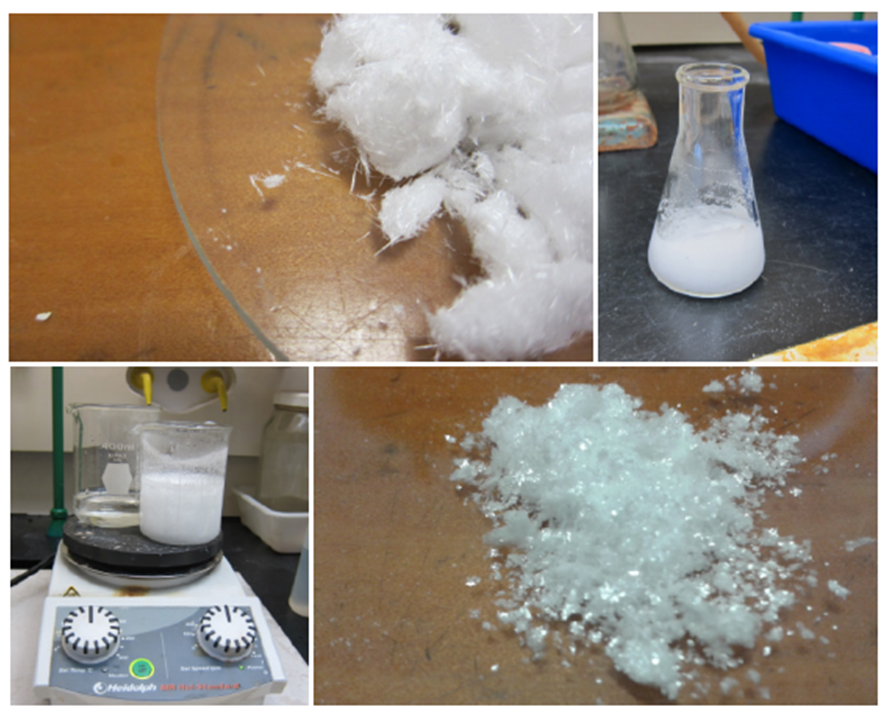Aspirin is a pain relieving compound that most students will be familiar with, thus its synthesis gives students an insight into how chemistry is used in real-life applications. We have taken a common undergraduate experiment and incorporated 1H-NMR spectroscopy, used to determine the purity and report the structure of their product, and multi-step synthesis.
The synthesis of aspirin by O-acetylation of salicylic acid is incorporated into many undergraduate synthetic chemistry laboratory courses. In this lab manual, ‘Synthesis of Aspirin’, we have added an additional step, hydrolysis of methyl salicylate (oil of wintergreen), to introduce multi-step synthesis and the idea of converting a naturally occurring substance to one of therapeutic value. The purity of aspirin as a pharmaceutical is crucial, and therefore students determine the purity of their product. Traditionally, the purity is determined by thin layer chromatography (TLC), but here we introduce 1H-NMR spectroscopy as a means of determining the purity of their sample and giving students experience in reporting the chemical shifts of a synthetic drug.

